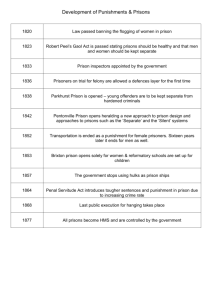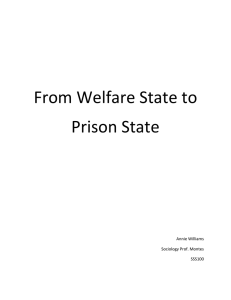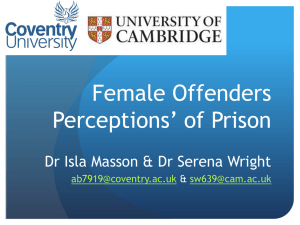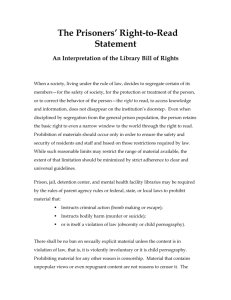here - The Griffins Society
advertisement
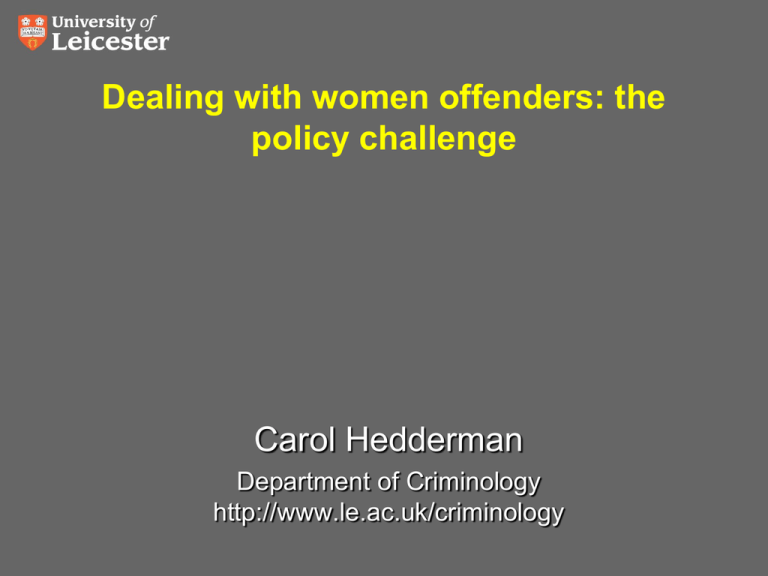
Dealing with women offenders: the policy challenge Carol Hedderman Department of Criminology http://www.le.ac.uk/criminology The mission remains the same The Corston Report (2007: 16) • Equal treatment of men and women does not result in equal outcomes… • The majority of female offenders have committed non-violent offences and present little risk to the public... • Custodial experience affects women differently and disproportionately from men ...and they are more likely to lose their home and children as a result of imprisonment. Two main challenges Guarding against Government funding cuts Evidence of impact is the best form of defence against cuts. This is a real area of weakness. • Many small projects run on shoestring budgets • Insufficient thought and funding has been given to learning from these projects without burdensome data demands • Funders agreeing a basket of common measures would reduce burden on small projects and generate the best evidence base The other challenge Reducing the number going to prison • Prison population = no of sentences x length. • Claims about reductions in the prison population and increases in community sentences may be true but this is not because the number of women going into prison has fallen – it hasn’t! • Alternatives to custody are being used as alternatives to each other not to prison. • There is evidence to suggest that more women are being sucked into the CJS. The evidence Report Year Sentenced Population WNC 1991 1,148 Wedderburn/PRT 2000 2,666 WORP 2004 3,449 Corston 2007 3,345 Latest 2008 3,524 (National Statistics) Receptions under custodial sentence 2,247 7,006 8,264 8,056 8,862 No evidence of diversion: 11% increase in the proportion of women being received into prison on sentences under six months. In this context the rising number of SSOs is worrying. Evidence of net widening: the increase in community orders is exclusively among short orders.






